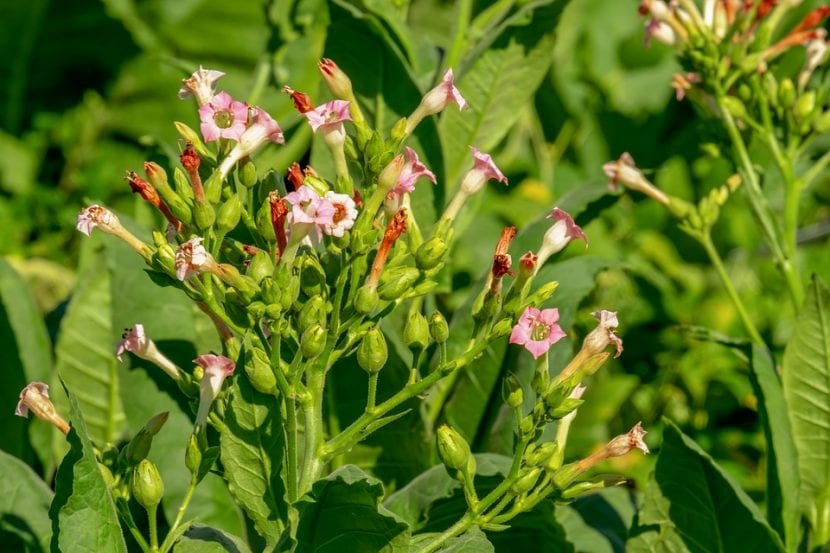
All the Nicotiana They are a genus of relatively small trees and shrubs, which can be used as hedges since with them we can have a beautiful border.
They are plants whose maintenance is quite simple since they resist weak frosts but also live wonderfully in warmer regions, such as the subtropics. Know them.
Origin and characteristics of the Nicotiana
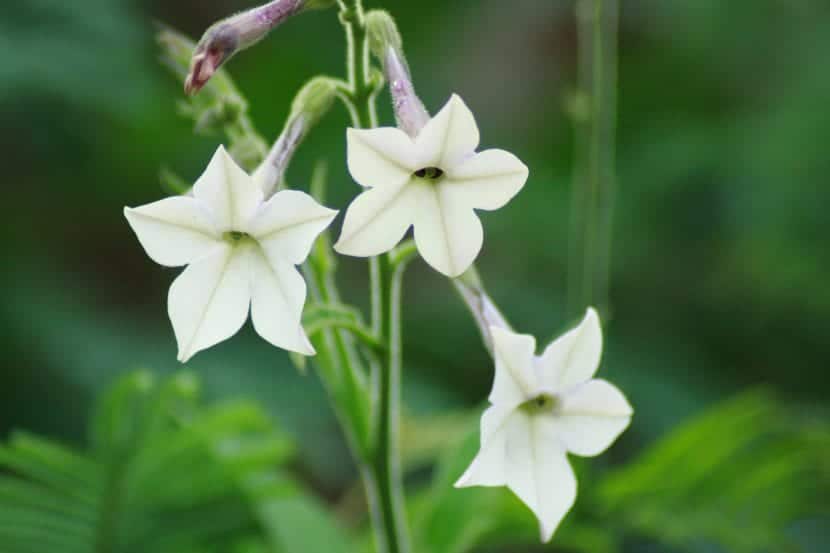
Image - Wikimedia / Swaminathan - nicotiana alata
Nicotiana are a genus of herbs and shrubs native to temperate and subtropical regions of the world, especially North and South America, Australia, south-west Africa, and the southern Pacific. They grow to heights between 0,50cm and 3-4 meters..
The leaves are whole, green, and evergreen (that is, they stay on the plant for a few months - sometimes a year, depending on the climate and the species). The white, yellow or pink flowers bloom in spring-summer. The fruits are small and ripen in late summer / early fall.
Main species
The genus is made up of about 45 species, of which the most important are:
Nicotiana benthamiana

Image - Wikimedia / Chandres
It is a herbaceous plant native to the hills and cliffs of northern Australia. It can reach a maximum height of 1,5 meters, with ovate green leaves, and produces white flowers.
nicotiana glauca

Known as tree tobacco, gandul, or palán palán, it is a shrub or small tree native to Argentina and Bolivia that reaches a height of 6 meters. The leaves are ovate, elliptical or oblong, bluish-green in color. Produces yellow flowers in late spring / summer.
In Spain it was included in the Spanish Catalog of Invasive Species of Royal Decree 630/2013 of August 2, since it has become naturalized in all Mediterranean slopes where it has already caused problems in Alicante, Murcia and in other parts of the country such as in the Park National of Timanfaya (Lanzarote, Canary Islands). However, on January 21, 2015 the inclusion was annulled.
Nicotiana rustica
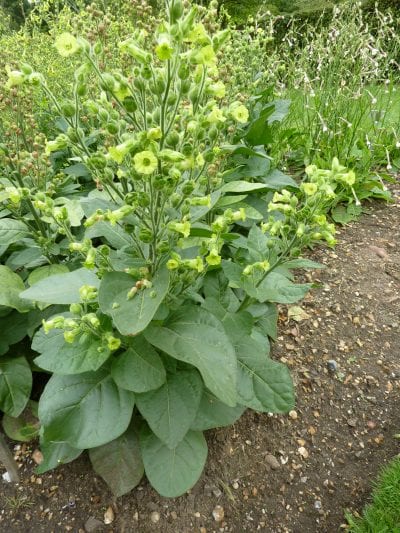
Image - Wikimedia / Magnus Manske
Known as mapacho or picietl, it is a shrubby plant native to South America that reaches a height of up to 1 meter. The leaves are green, ovate, or elliptical, and it produces whitish-yellow flowers.
Nicotiana tabacum

Image - Flickr / anro0002
Without a doubt, it is the best known. Popularly called Virginia tobacco, peten, or holy grass, it is an annual, biennial, or perennial herb native to tropical America. It reaches a height between 50cm and 3 meters, and produces large, green, ovate to lanceolate leaves. The flowers are yellowish-green or pinkish.
It is believed to be a natural hybrid of Nicotiana sylvestris y Nicotiana tomentosa.
What are the care they require?
If you want to have a copy, we recommend that you provide it with the following care:
Location
It is a plant that it has to be in full sun so that it can have a correct development.
Earth
- Flower pot: the substrate must be fertile, therefore it is advisable to fill it with mulch (for sale here), and if you want to mix it with 20 or 30% perlite, arlite (for sale here) or similar so that it has a good drainage.
- Garden: grows in soils rich in organic matter, well drained.
Irrigation
Frequent, especially if it is being grown in a pot. You have to water an average of 3-4 times a week during the summer, and an average of 1-2 a week the rest of the year.
Subscriber
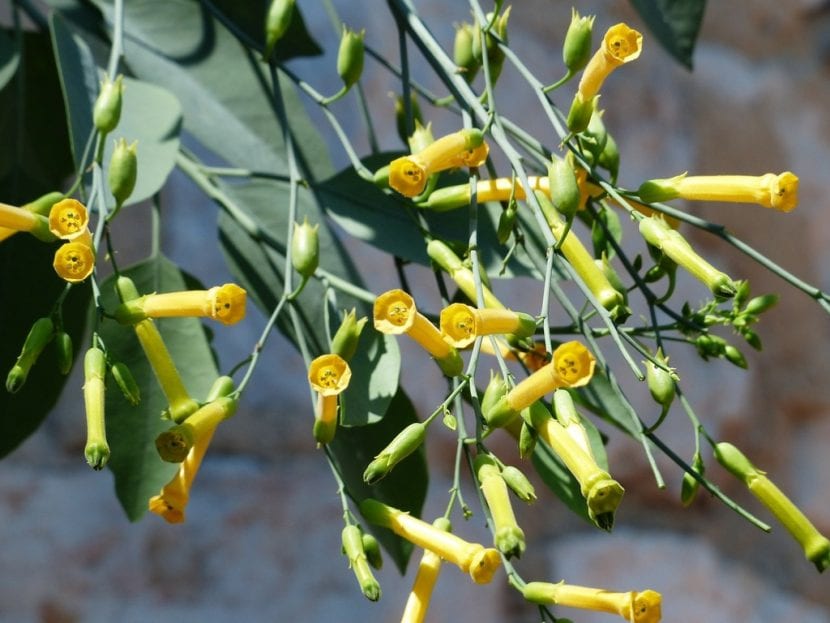
In spring and summer, with organic fertilizers such as guano, compost or manure from herbivorous animals.
Multiplication
The Nicotiana multiply by seeds in spring, following this step by step:
- First, put them in a glass of water for 24 hours. This way you will know which ones will germinate with almost total security - it will be the ones that sink - and those that will not.
- After that time, fill a seedling tray or several pots with soil for seedlings (for sale here) and water.
- Then, put a maximum of two seeds in each socket or pot. In this way, you ensure that there are many that can reach adulthood.
- Finally, cover them with a thin layer of substrate, water again, and place the seedbed outside, in full sun.
Thus they will germinate in about 15-20 days.
Plagues and diseases
Does not have. Maybe a mealybug if the environment is very dry, but nothing serious. You can remove it by hand, or treat with diatomaceous earth (for sale No products found.). In the rainy season, as a precaution it is advisable to use snail and slug repellants.
Pruning
It's not really necessary. Remove only the dry branches and leaves that you see.
Planting or transplanting time
In spring.
Rusticity
It depends on the species, but in general they resist cold and some frosts as long as they are weak.
What uses are they given?
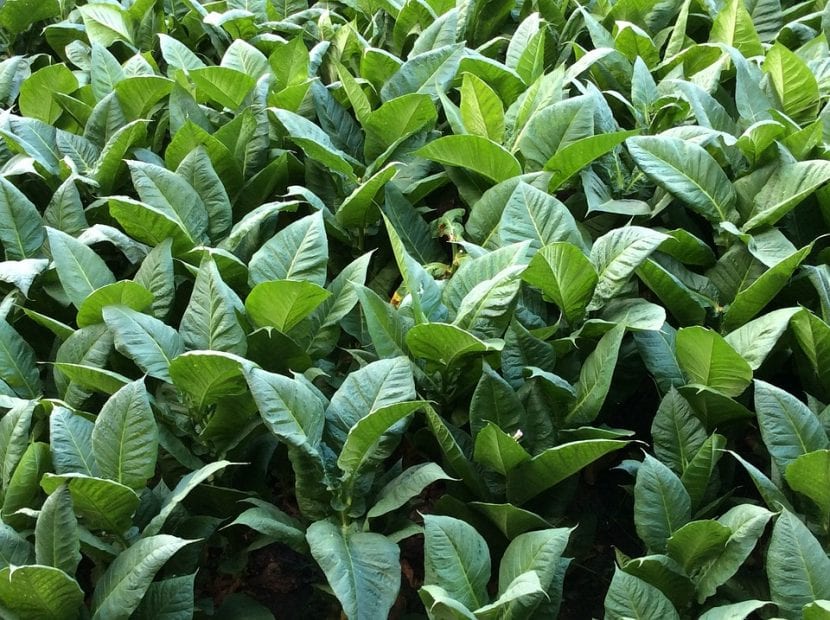
Ornamental
They are plants that can be grown both in pots and in the garden. They produce beautiful flowers, and their maintenance is very simple.
As a pesticide
Tobacco leaves are a good pesticide, since prevent and control common pests such as spider mites or aphids. To do this, you will only need 10 new cigars (or 20 grams of rolling tobacco), 1 liter of water, pharmacy alcohol, two plastic containers, a fine strainer and a sprayer.
Once you have it, you must follow the step by step that we explain in this article:

Other uses
Everyone knows that tobacco (Nicotiana tabacum above all) it is a legal drug. They have been smoking, at least, since 500 BC. C. The problem is that before it was natural, but today a cigar does not only contain tobacco.
It has addictive substances, and they can also cause diarrhea, depression, and even cancer.
Nicotiana are pretty plants, but like all plants in the world, it is important to know them in order to put them to good use.